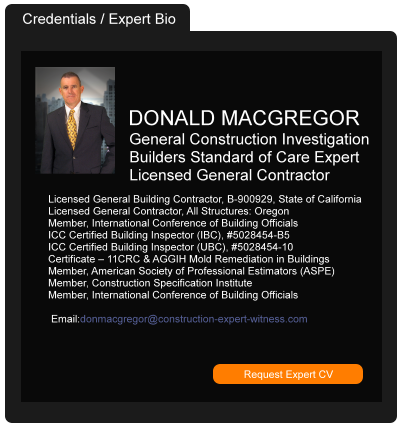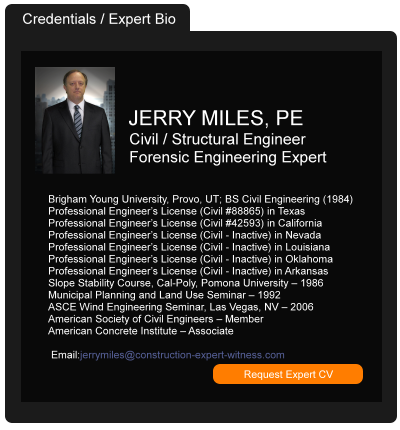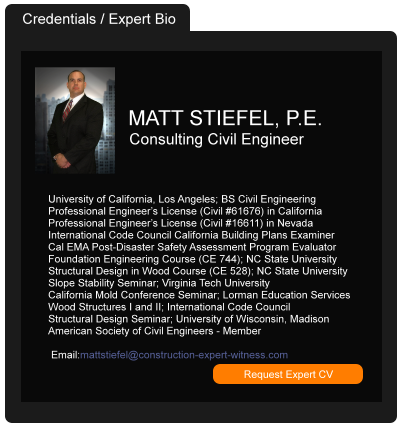Avoiding Project Planning Disasters: How to Spot Problem Projects
December 13, 2021 —
James T. Dixon - Construction ExecutiveThe burden of project planning falls first and foremost upon a project owner. Owners have varying levels of sophistication, and the smart ones fill weak spots on their staff by engaging project managers, construction managers and owner’s representatives.
Typically, the owner then delegates the largest part of the project’s plan to the contractor in terms of creation and execution of a critical path method schedule during the construction phase. Before accepting that burden, a wise contractor will evaluate the project to determine if it is on a path to success or disaster. It is guaranteed that an owner’s problems will become the contractor’s problems in one way or another.
There are legendary projects that were also legendary planning failures. The iconic Sydney Opera House is one. The design competition began in 1955. After selecting the architect, the owner implemented a team that involved that architect, a structural engineer and an executive committee of inexperienced politicians. The original plan included a budget of $7 million (Australian) and a completion schedule spread over four years. That executive committee forced the project to start before designs were complete, doubled the number of theaters and then put a strangle-hold on the payment process, eventually causing the architect to quit and return to Europe with the construction drawings. The Opera House opened for its first performance in 1973—14 years late and $98 million over budget.
Reprinted courtesy of
James T. Dixon, Construction Executive, a publication of Associated Builders and Contractors. All rights reserved.
Read the court decisionRead the full story...Reprinted courtesy of
Sixth Circuit Finds No Coverage for Property Damage Caused by Faulty Workmanship
October 21, 2015 —
Tred R. Eyerly – Insurance Law HawaiiThe Sixth Circuit affirmed the lower court's order granting summary judgment to the insurer who denied a defense for a construction defect claim. Steel Supply & Eng'g Co. v. Illinois Nat'. Ins. Co., 2015 U.S. App. LEXIS 14363 (6th Cir. Aug. 13, 2015).
Steel Supply contracted with the Carmel Redevelopment Corporation to fabricate and erect steel for a construction project in Carmel, Indiana. After the steel was erected, an iron worker at the site discovered defects in the steel. Subsequent investigations revealed additional defects.
Carmel filed suit against Steel Supply for breach of contract. The complaint alleged that a critical connection that Steel Supply designed was inadequate to handle the forces coming onto it. Carmel claimed that the immediate need to remediate the steel damaged Carmel directly, and that other contractors sought damages from Carmel for harm caused by the delays.
Read the court decisionRead the full story...Reprinted courtesy of
Tred R. Eyerly, Insurance Law HawaiiMr. Eyerly may be contacted at
te@hawaiilawyer.com
Fifth Circuit Holds Insurer Owes Duty to Defend Latent Condition Claim That Caused Fire Damage to Property Years After Construction Work
October 05, 2020 —
Jeremy S. Macklin - Traub Lieberman Insurance Law BlogMost general liability policies only provide coverage for “property damage” that occurs during the policy period. Thus, when analyzing coverage for a construction defect claim, it is important to ascertain the date on which damage occurred. Of course, the plaintiffs’ bar crafts pleadings to be purposefully vague as to the date (or period) of damage to property. A recent Fifth Circuit decision applying Texas law addresses this coverage issue in the context of allegations of a condition created by an insured during the policy period that caused damage after the policy expired.
In Gonzalez v. Mid-Continent Cas. Co., 969 F.3d 554 (5th Cir. 2020), Gilbert Gonzales (the insured) was a siding contractor. In 2013, the underlying plaintiff hired Gonzales to install new siding on his house. In 2016, the underlying plaintiff’s house was damaged in a fire. The underlying plaintiff sued Gilbert in Texas state court alleging that when Gonzalez installed the siding in 2013, he hammered nails through electrical wiring and created a dangerous condition that caused a fire three years later in 2016.
At the time Gilbert performed construction work, he was insured by Mid-Continent Casualty Company. Mid-Continent disclaimed coverage to Gonzales on the basis that the complaint unequivocally alleged that property was damaged in 2016 and there were no allegations that property damage occurred prior to 2016 or was continuing in nature.
Read the court decisionRead the full story...Reprinted courtesy of
Jeremy S. Macklin, Traub LiebermanMr. Macklin may be contacted at
jmacklin@tlsslaw.com
Float-In of MassDOT Span Sails, But Delay Dispute Lingers
December 08, 2016 —
Johanna Knapschaefer – Engineering News-RecordThe Massachusetts Dept. of Transportation and a contracting team are in discussions regarding fabrication issues that caused a two-year delay in the completion of a key crossing between Quincy and Weymouth. The full completion of the $244-million Fore River Bridge replacement, originally slated for Jan. 5, 2017, is now projected for February 2019.
Read the court decisionRead the full story...Reprinted courtesy of
Johanna Knapschaefer, Engineering News-RecordENR may be contacted at
enr.com@bnpmedia.com
Superintendent’s On-Site Supervision Compensable as Labor Under Miller Act
March 13, 2023 —
David Adelstein - Florida Construction Legal UpdatesA recent Miller Act payment bond decision out of the District of Columbia Circuit Court of Appeals, U.S. f/u/b/o Civil Construction, LLC v. Hirani Engineering & Land Surveying, PC, 58 F.4th 1250 (D.C. Circ. 2023), dealt with the issue of whether a subcontractor’s superintendent constitutes recoverable “labor” within the meaning of the Miller Act and compensable as a cost under the Miller Act that typically views labor as on-site physical labor.
The issue is that the Miller Act covers “[e]very person that has furnished labor or material in carrying out work provided for in a contract.” Civil Construction, supra, at 1253 quoting 40 U.S.C. s. 3133(b)(1). The Miller Act does not define labor. The subcontractor claimed labor includes actual superintending at the job site. The surety disagreed that a superintendent’s presence on a job site constitutes labor as the superintendent has to actually perform physical labor on the job site to constitute compensable labor under the Miller Act.
The subcontractor argued its subcontract and the government’s quality control standards required detailed daily reports that verified manpower, equipment, and work performed at the job site. It further claimed its superintendent had to continuously supervise and inspect construction activities on-site: “[the] superintendent had to be on-site to account for, among other things, hours worked by crew members, usage and standby hours for each piece of equipment, materials delivered, weather throughout the day, and all work performed. These on-site responsibilities reflected the government’s quality control standards, under which the superintendent as ‘the most senior site manager at the project, is responsible for the overall construction activities at the site…includ[ing] all quality, workmanship, and production of crews and equipment.” Civil Construction, supra, at 1253-54.
Read the court decisionRead the full story...Reprinted courtesy of
David Adelstein, Kirwin Norris, P.A.Mr. Adelstein may be contacted at
dma@kirwinnorris.com
Connecticut Supreme Court Further Refines Meaning of "Collapse"
January 13, 2020 —
Tred R. Eyerly - Insurance Law HawaiiConnecticut courts have been inundated with collapse cases the past couple of years due to insureds' living in homes that were constructed with defective concrete manufactured by J.J. Mottes Concrete Company. In a duo of cases, the Connecticut Supreme Court responded to a certified question from the U.S. District Court, holding that collapse required that the building be in imminent danger of falling down. Vera v. Liberty Mut. Fire Ins. Co., 2019 Conn. LEXIS 339 (Conn. Nov. 12, 2019).
Plaintiffs had resided in their home since 2009. The home was built in 1993. In August 2015, after learning about the problem of crumbling basement walls affecting homes in their community due to cement manufactured by Mottes, they retained a structural engineer to evaluate their basement walls. The engineer found spider web cracking approximately 1/16 of an inch wide in the basement walls and three small vertical cracks. There were no visible signs of bowing. The engineer did not find that the walls were in imminent danger of falling down, but recommended that the basement walls be replaced.
Plaintiffs submitted a claim under their homeowners policy to Liberty Mutual. The claim was denied. The policy did not define collapse, but stated that collapse did not include "settling, cracking, shrinking, bulging or expansion."
Read the court decisionRead the full story...Reprinted courtesy of
Tred R. Eyerly, Damon Key Leong Kupchak HastertMr. Eyerly may be contacted at
te@hawaiilawyer.com
Not to Miss at This Year’s Archtober Festival
October 15, 2014 —
Carrie Hojnicki – BloombergNew York architecture fanatics everywhere can rejoice: Archtober has arrived. In its fourth annual iteration, the monthlong festival throws a spotlight on the importance of architecture and design in the five boroughs, calling special attention to the city’s rich built history and exciting future. In addition to a lineup of lectures, openings, and workshops, the American Institute of Architects (AIA) New York Chapter–sponsored initiative highlights a “Building of the Day,” with on-site tours led by the architects themselves.
Here are five events not to miss this Archtober.
1. AIA’s New York chapter puts its own spin on the architecture tour: a boat ride. Guides from the AIA will share their wisdom as the cruise circles the tip of Manhattan, passing architectural marvels aplenty. October 3, 10 am and 1:30 pm, Classic Harbor Line
Read the court decisionRead the full story...Reprinted courtesy of
Carrie Hojnicki, Bloomberg
Patriarch Partners Decision Confirms Government Subpoenas May Constitute a “Claim” Under D&O Policy; Warns Policyholders to Think Broadly When Representing Facts and Circumstances to Insurers
January 08, 2019 —
Michael S. Levine, Sergio F. Oehninger, & Joshua S. Paster - Hunton Andrews KurthThe Second Circuit recently confirmed in Patriarch Partners, LLC v. Axis Insurance Co. that a warranty letter accompanying the policyholder’s insurance application barred coverage for a lengthy SEC investigation, which ripened into a “Claim” prior to the policy’s inception date. The opinion left intact the lower court’s finding that the SEC subpoena constituted a “demand for non-monetary relief” and thus qualified as a “Claim” under the directors and officers (D&O) insurance policy.
Reprinted courtesy of Hunton Andrews Kurth attorneys
Michael S. Levine,
Sergio F. Oehninger and
Joshua S. Paster
Mr. Levine may be contacted at mlevine@HuntonAK.com
Mr. Oehninger may be contacted at soehninger@HuntonAK.com
Mr. Paster may be contacted at jpaster@HuntonAK.com
Read the court decisionRead the full story...Reprinted courtesy of


































































